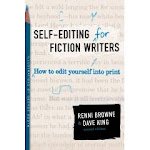It’s conference season and many of us are making plans to attend at least one. Today I'm going to share some of the things you may want to prepare before you go. Two of the main reasons to attend a conference are Networking and pitching and I’ll concentrate on what you’ll need with these two goals in mind.
Networking
Networking is the easiest to prepare for. If you're just going to meet other writers and professionals the main thing you need is a good business card. Please take note, I said, good, NOT expensive.
These are the things a good writers business card includes:
Your picture - I know, I hate to have my picture taken and I always hate how it looks. But, in this business you need to be remembered and recognized and your picture is the best and easiest way to do that. If someone has a card with your picture on it, they'll remember who you are months longer than if it's just got your name. Also, it's harder to throw away a card with a picture on it than a card with just text on it.
The name you use when you write - if you use a pseudonym, be sure it's on the card. Here's an example (I just made up the names - they're not representative of a real person): Susie Stone, writing as Catherine Milo.
Your email address - this is going to be the main way others will contact you.
Your website or blog address - never pass up the opportunity to encourage new visitors to your sites. Also, many people will follow up on what you've told them and this will be a way for them to get to know you better.
Cell phone number - this isn't absolutely necessary, but it helps if your email goes down and someone has a hot lead for you.
Please take note of what is NOT included on a business card now. You do not need your physical address on the card. Actually, it's a liability. It can be dangerous to give out your home address, so if you feel you must include an address, invest in a PO Box.
It is possible to make your own business cards, using Avery brand sheets that go through your ink jet printer. The trick to successfully printing your own cards is to keep them simple! Another inexpensive way to go is by using VistaPrint. This online company is very reputable and I personally know a lot of writers who get their cards through them.
Bring some writing samples:
These are good to have simply because you'll probably find yourself in a group, or at a table, where everyone is sharing something they've written. It might not happen, but chances are, if you don't have anything to show, you'll be disappointed.
Pitching
This is when you attend a conference because you have something you want to sell to a publisher or if you want to get an agent. The things below that you'll need are specifically for those wishing to sell a fiction or non-fiction book.
It's important to keep in mind that everything you prepare for the conference to pitch a project is incremental in nature.
Your tag line or hook should make the editor or agent ask to hear more about your project (this is the time for the elevator pitch).
The elevator pitch should lead them to ask for your one sheet.
Your one sheet or pitch sheet should lead them to ask you to send them a proposal when you get home.
Your proposal should lead them to ask you to send them your entire manuscript.
Your entire manuscript should lead them to offer you a contract.
These are the generic steps in publishing. God can step in at any time in the process and something completely different can, and often does, happen. But, until that happens, I try to take it one step at a time.
Now Let's look at what's involved in each one of these components.
tag line or hook - this is one sentence, preferably 15 words or less. It should NOT be a synopsis of your book, but rather it's to intrigue the editor/agent and make them want to know more.
elevator pitch - this should be short, around 45 seconds. It will sound a lot like back cover copy or what is on your one sheet. Again, it's to make the editor/agent ask to see more.
one sheet or pitch sheet - this gives the blurb about your book, information about yourself (bio) and general info, like genre and audience for your project. If it's fiction, it states that the project is finished. If it's non-fiction it gives a completion date if the project is unfinished
You won't need a full proposal or manuscript for the conference. If an editor or agent is interested they'll ask you to email or snail mail them one when you get home.
Again, as with networking, you'll need to bring some samples of your writing.
This is just a general overview of what is needed. If you have specific questions, feel free to use the contact form at the bottom of the blog and send me your question. You can also post your question in the comments section. In the next few weeks I'll address each of these components individually or in groups and give you some examples to see exactly what others have used successfully.













